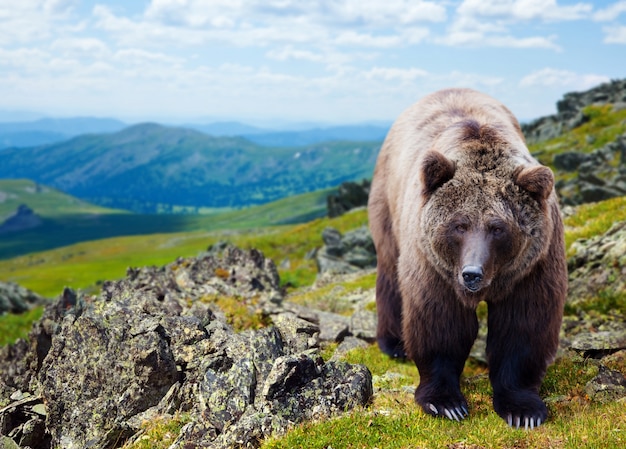Fascinating Facts about Grizzly Bears

Grizzly bears are known for their iconic hump of muscles on their shoulders.
Male grizzly bears can weigh up to 1,500 pounds.
Female grizzly bears are smaller, weighing around 800 pounds.
Grizzly bears have a keen sense of smell, which helps them locate food from miles away.
They can run up to speeds of 35 miles per hour.
Grizzly bears can hibernate for up to 7 months, during which time they don’t eat, drink, or excrete waste.
They have a strong bite force, capable of crushing a bowling ball.
Grizzly bears are excellent swimmers and can swim long distances.
They can grow up to 10 feet tall when standing on their hind legs.
Grizzly bears have long claws that can measure up to 4 inches in length.
These bears have a varied diet, including grass, berries, fish, and even large mammals like elk and moose.
Grizzlies have a unique mating ritual, which involves males fighting each other for the right to mate with a female.
They have a lifespan of around 20-30 years in the wild.
Grizzly bears have a distinctive shoulder hump, which houses powerful muscles that aid in digging and attacking.
They have a layer of fat to keep them warm during the winter months.
Grizzlies can consume up to 90 pounds of food in a single day.
They have a unique digestive system that allows them to extract nutrients from tough plant material.
Grizzly bears play a crucial role in maintaining healthy ecosystems by dispersing seeds and controlling herbivore populations.
Fascinating Facts about Grizzly Bears part 2
They have a high level of intelligence and problem-solving abilities.
Grizzlies have excellent memory, often remembering food sources or safe spots for many years.
These bears are known for their distinctive huffing, growling, and roaring sounds.
Grizzly bears are excellent tree climbers, despite their large size.
They have a strong sense of territory and will mark their boundaries with scratches on trees.
Grizzlies have been a symbol of strength and power in many Native American cultures.
They have a keen sense of hearing, which helps them detect any potential threats.
Grizzly bears play a crucial role in balancing the ecosystem by regulating prey populations.
These bears have a unique skeletal structure that allows them to stand upright and use their paws for various tasks.
Grizzlies have an acute sense of vision, even in dim light conditions.
They have a thick undercoat of fur that helps insulate them from the cold.
Grizzly bears have been featured in numerous folklore tales and myths across different cultures.
These bears are highly adaptable and can inhabit a wide range of habitats, from forests to tundra.
Grizzlies communicate through various physical gestures, vocalizations, and scent marking.
They are protective parents and will fiercely defend their cubs from any potential threats.
Grizzlies are not true hibernators, as they can wake up easily during their winter sleep.
These bears have large home ranges, with male territories covering up to 1,500 square miles.
Grizzly bears are considered a keystone species, as their presence influences the behavior of other animals and the overall ecosystem.
They have a sharp sense of smell, capable of detecting food from miles away.
Grizzlies have a strong jaw structure, ideal for crushing bones and tough vegetation.
These bears are curious creatures and are known to investigate new objects or scents in their environment.
Grizzly bears rely on their acute hearing to detect prey or potential danger in their surroundings.
They are excellent diggers, using their strong claws to excavate burrows or search for food.
Grizzlies have a thick layer of fat that helps them survive the winter months without eating.
These bears are known to have a solitary nature, with males only interacting with females during mating season.
Grizzly bears have a complex social structure, with dominance hierarchies among both males and females.
They are highly resilient animals, capable of surviving in harsh environments with extreme temperatures and scarce resources.

